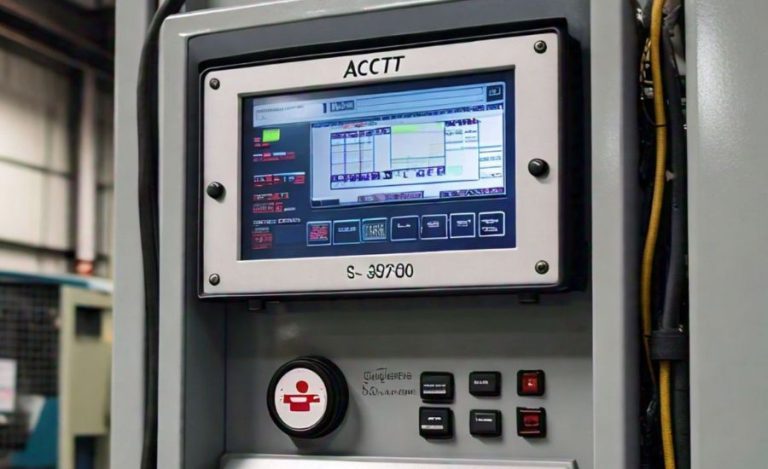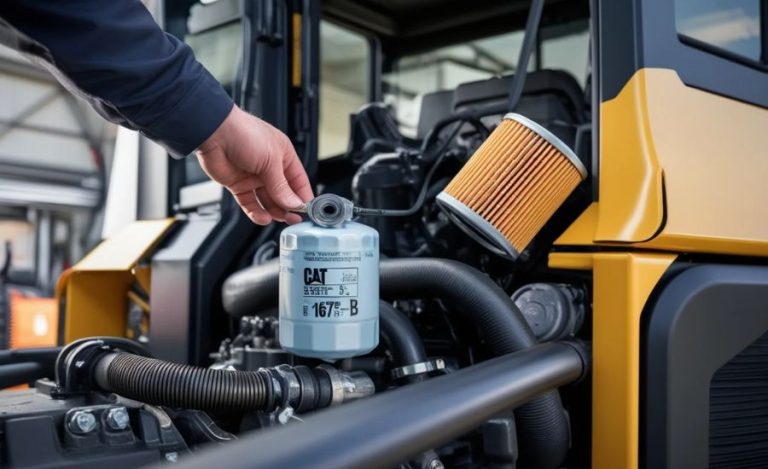Vbloc Won’t Charge Or Turn On, Troubleshooting, Typical Reasons & More
Introduction
While the vBloc device is generally reliable and durable, like any electronic device, users may occasionally encounter issues related to charging or powering it on. These issues could be caused by a number of things, such as the battery’s state, the caliber of the charging apparatus, or possible software errors. The purpose of this tutorial is to assist users in identifying and fixing these typical problems so that their device continues to function at its best. In this article we;ll read about Vbloc Won’t Charge Or Turn On.
Initial Troubleshooting Steps

Try these fundamental troubleshooting techniques before diving into challenging problems:
Check the Battery Level Indicator: Plug your device into a known-to-be-functional charger to see if any lights indicate charging..
Wait for a Few Minutes:Should the battery be completely depleted, the device may not react for many minutes following plug-in.
Use an Alternate Outlet: Try another power outlet; occasionally the issue may be the one you use.
Typical Reasons: Why Won’t the vBloc Device Charge or Turn On?
Finding the underlying cause is the first step in resolving any of the several reasons why your vBloc device isn’t charging or turning on. A broken charging cord or adapter is a common cause.
To power up properly, the vBloc device needs a working charging mechanism, just like other electronic equipment.
Even if the vBloc device’s internal parts are in fine condition, it won’t charge or turn on if the cable or adapter is broken.
The device’s battery may have degraded over time, which is another possibility. After prolonged usage, all batteries deteriorate, and the vBloc gadget is no different. The vBloc gadget will not charge or turn on if the battery is nearing the end of its useful life, requiring a new battery.
Troubleshooting the vBloc Device Charging Issues:
If you’re experiencing issues with your vBloc device not charging or turning on, there are several troubleshooting steps you can follow before reaching out to a professional for help:
- Inspect the Charging Cable and Adapter: The first thing to check is whether the charging cable and adapter are in good condition. Look for any visible damage, such as frays or bends, and try using the charger with another device to see if it works. If either the cable or adapter appears faulty, replacing them with new ones should resolve the issue.
- Examine the Charging Port: Over time, dust, dirt, or debris can accumulate in the charging port, interfering with the connection between the charger and the device. To fix this, gently clean the charging port using a soft cloth or compressed air to clear any obstructions.
- Perform a Device Reset: Sometimes, performing a reset can resolve charging issues. Depending on your vBloc model, refer to the user manual for instructions on how to perform either a soft or hard reset. This simple step might restore normal functionality to your device.
- Check for Software or Firmware Updates: Outdated software can occasionally cause malfunctions, including charging problems. Ensure that your vBloc device is running the latest software or firmware by connecting it to your computer or checking for updates through the relevant app. Updating your device could fix any underlying issues preventing it from charging or powering on.
Maintenance Tips to Prevent Charging Problems:

To ensure your vBloc device continues to function properly and avoid charging or power issues in the future, it’s important to follow a few simple maintenance practices. Here are some helpful tips to keep your device in top condition:
- Regular Cleaning: Over time, dust and debris can build up in the charging port, causing connection problems. To prevent this, clean the port regularly using a soft cloth or compressed air. This will help maintain a clear path for the charger and ensure reliable power connections.
- Proper Battery Care: Although the vBloc is built for durability, its battery needs careful handling to extend its lifespan. Avoid exposing the device to extreme temperatures, as this can degrade the battery over time. It’s also a good idea to charge the device regularly, avoiding deep discharges that can damage the battery and reduce its efficiency.
- Use Authorized Chargers: Using third-party or incompatible chargers can put your vBloc device at risk, potentially causing damage. Always use the charger provided by the manufacturer or one that meets the recommended specifications for your device. This ensures safe, reliable charging and protects your device’s longevity.
When to Contact Their Professional Service Team?
If the technical support team is unable to identify and resolve the issue remotely, the next step is to contact their skilled service team. You can send your vBloc device to their facility for a thorough inspection and repair, ensuring that the device stays in optimal condition.
Before you start, make sure you have an electronic bill or a copy of the original invoice for your equipment. If the equipment is still covered under warranty, free repair services are offered.
Repairs could cost a fair amount if the warranty has passed.
Once the professional team completes the repair, your vBloc device will be restored, and you can continue your weight loss journey without any further interruptions.
Understanding the Charging Process

Knowing how the vBloc device charges can help identify why it won’t charge or turn on. The device uses a specific electrical current to power the battery. Any disruption in this process, such as a malfunctioning charger, can prevent it from working.
Environmental Factors
The environment in which the vBloc device is used can impact its performance. For example, exposure to extreme temperatures or moisture can cause the device to malfunction, leading to situations where it won’t charge or turn on.
When the vBloc Device Becomes Unresponsive
There’s nothing to be concerned about if your vBloc device stops charging or turning on. Simple troubleshooting techniques can frequently assist in fixing the problem. To see if functionality is restored, start by inspecting the charger, looking for any obvious damage on the device, or doing a reset.
Replacement Options
In some cases, if the device fails to charge or turn on due to significant internal damage or battery issues, replacing the device may be the most viable solution. Consult with your healthcare provider to discuss available replacement options, particularly if your device is covered under a medical plan.
Surge Protection
To safeguard your vBloc device from potential power surges, consider investing in a surge protector. These devices help prevent electrical spikes from damaging your equipment, ensuring that your vBloc device remains functional and protected from such risks.

Facts:
1. Common Causes for Charging Issues:
- Bad Charger or Adapter: One of the most frequent reasons for charging issues is a broken charger or adapter.
- If the charger is damaged or incompatible, it won’t properly charge the device.
- Degraded Battery: Like any rechargeable device, the battery in the vBloc may wear out over time. A battery nearing the end of its life may prevent the device from charging or turning on.
- Environmental Factors: Extreme temperatures or moisture exposure can negatively impact the device’s internal components, leading to charging or power issues.
2. Troubleshooting Steps:
- Check the Charging Cable and Adapter: Inspect the charger for visible damage and test it with another device. If the charger is faulty, replacing it should resolve the issue.
- Examine the Charging Port: Dust and debris can accumulate in the charging port, causing connection issues. Cleaning the port can restore proper functionality.
- Perform a Reset: A soft or hard reset might resolve issues if the device isn’t charging. Refer to the user manual for guidance on how to reset your vBloc device.
- Check for Software or Firmware Updates: An outdated software version can sometimes interfere with charging. Ensure the device is running the latest updates.
3. Maintenance Tips for Longevity:
- Regular Cleaning: Dust and debris in the charging port can disrupt the charging process. Clean the port regularly to ensure a secure connection.
- Battery Care: Avoid exposing the device to extreme temperatures, and try to avoid deep discharges to preserve the battery life.
- Use Authorized Chargers: Only use the manufacturer’s charger or a compatible one to prevent damage to the device.
4. When to Contact Professional Support:
- Technical Support: If remote troubleshooting doesn’t resolve the issue, reach out to the service team for further assistance.
- Warranty Coverage: If the device is under warranty, repairs may be free. Ensure you have the original invoice or e-bill to verify the warranty status.
- Replacement Option: If internal damage or battery failure is severe, replacement might be the best option, especially if it’s covered under a medical plan.
5. Surge Protection:
- Protect the Device from Power Surges: Use a surge protector to prevent damage from electrical spikes, ensuring the longevity of the device
FAQs:
1. What is preventing my vBloc gadget from charging or turning on?
- Several reasons could be causing this issue, including a faulty charging cable, adapter, or a degraded battery. Environmental factors such as exposure to extreme temperatures or moisture may also affect the device. Try troubleshooting by checking the charger, inspecting the device for damage, or cleaning the charging port.
2. What should I do if my vBloc device is not responding?
- Start with basic troubleshooting: check the charging cable and adapter for damage, clean the charging port, and perform a reset (either soft or hard, depending on your device model). If the device still doesn’t turn on, check for software or firmware updates. If these steps don’t resolve the issue, contact the technical support team for further assistance.
3. How can I clean the charging port of my vBloc device?
- Dust, dirt, or debris may accumulate in the charging port, preventing proper charging. You can clean the port gently using a soft cloth or compressed air to clear any obstructions. Be sure to handle the device carefully to avoid damaging internal components.
4. How do I perform a reset on my vBloc device?
- A reset can often resolve power issues. To reset the device, refer to the user manual for specific instructions on performing a soft or hard reset, depending on your model. A soft reset generally involves turning the device off and on again, while a hard reset may involve a combination of button presses.
5. Can I use any charger to charge my vBloc device?
- No, it’s essential to use the charger provided by the manufacturer or a compatible charger that meets the recommended specifications for your vBloc device. Using third-party chargers can cause damage or prevent the device from charging properly.
6. What can I do to extend my vBloc device’s battery life?
- To preserve the battery, avoid exposing the device to extreme temperatures and charge it regularly. Try not to allow the battery to fully deplete before recharging, as deep discharges can shorten the lifespan of the battery.
7. What should I do if the device is still under warranty but not charging?
- If your vBloc device is still under warranty, contact the support team for assistance. Be sure to have your original invoice or an e-bill ready to verify the warranty status. The repair may be covered free of charge if it’s within the warranty period.
8. What happens if the device is out of warranty?
- If your device is out of warranty, you may still be able to send it for repair, but you will likely be required to pay for the service. Contact the service team for a repair estimate and further instructions.
9. Can a surge protector help if my vBloc device isn’t charging?
- Yes, using a surge protector is a great way to safeguard your vBloc device from electrical spikes that could damage it. These devices help prevent power surges from affecting the internal components of your device, ensuring it stays functional.
10. When should I consider replacing my vBloc device?
- If your vBloc device has significant internal damage, a malfunctioning battery, or other issues that can’t be repaired, you might need to replace it. Consult with your healthcare provider to discuss replacement options, especially if your device is covered under a medical plan.
11. How can I check if my vBloc device needs a software update?
- To ensure your device is running the latest software or firmware, connect it to your computer or use the corresponding app to check for available updates. Keeping your device’s software up to date can resolve potential issues, including charging problems
Summary:
The vBloc device, while generally reliable, may encounter issues related to charging or turning on due to factors like a faulty charger, degraded battery, or environmental conditions. To resolve these problems, users should begin with basic troubleshooting steps, such as checking the charging cable and adapter, cleaning the charging port, and performing a device reset. If these steps don’t work, ensuring the device’s software is up to date might help.
Maintenance tips, such as cleaning the charging port regularly, using authorized chargers, and caring for the battery by avoiding extreme temperatures and deep discharges, can help prolong the device’s lifespan. In case the issue persists, users should contact the professional service team, especially if the device is under warranty.
Surge protection is recommended to safeguard the device from electrical spikes. If the device is significantly damaged or the battery is no longer functional, replacement might be necessary, and users should consult their healthcare provider about available options, particularly if covered by a medical plan.
Read More Information About Technology visit Discover Paradox
.






